by Lisa Cooke | Nov 25, 2016 | 01 What's New, Records & databases
Genealogical records and research for your Denmark ancestors has just gotten a little easier! New and updated genealogical collections for Danish genealogy have been added to FamilySearch. Also new this week, new and updated records for Sweden, Hungary, Britain, and Ireland.

Denmark – Census
It was truly a Danish delight when we heard the 1916 Denmark Census is now available at FamilySearch. Danish genealogy is just a bit easier with the availability of this census, especially when paired with the already published 1911 Denmark Census, also at FamilySearch.
This is an every-name index to the 1916 census of Denmark. This index was created by MyHeritage from images provided by the National Archives of Denmark. The collection at FamilySearch includes an index or abstract version in English and a digital image of the original.

This census was taken for the countries of Denmark, the Faroe Islands, Greenland, and the Danish West Indies, however, only the records for Denmark are available at FamilySearch. The enumeration for Denmark was divided into three sections with a different form for each of the sections: Copenhagen city, other cities, and rural areas.
This census names each individual in the home and includes: sex, calculated birth date and year, marital status, relationship to head-of-household, and residence.
Other genealogy record collections for Denmark can be found on FamilySearch, too. See the entire list here.
Sweden – Church Records
FamilySearch has four Swedish church record collections that have recently been updated. Church records are especially helpful when civil records such as birth, marriage, and deaths, are not available. Check out these four updated collections and their titles below.
| Sweden, Västmanland Church Records, 1538-1901; index 1622-1860 |
43,976 |
|
| Sweden, Värmland Church Records, 1509-1925; index 1640-1860 |
Browse Images |
|
| Sweden, Skaraborg Church Records, 1612-1921; index 1625-1860 |
Browse Images |
|
| Sweden, Västerbotten Church Records, 1619-1896; index, 1688-1860 |
36,337 |
|
Hungary – Civil Registration
More records have been added to the Hungarian Civil Registration records at FamilySearch as well. This collection includes the years 1895-1980.
The records are bound volumes of pre-printed forms with event information recorded by hand. From 1895 through 1906, the forms are one page per event, but beginning in 1907 each event occupies one row in a printed table, so there are multiple events recorded per page. The records are in Hungarian.
Civil registrations include birth, marriage, and death records. You may be able to find the following information in each of these groups:
Birth records:
- Date and place of birth
- Name of child
- Gender and religion
- Parents’ names and mother’s age
- Parents’ religion
- Signature of informant
Marriage records:
- Date and place of marriage
- Groom’s name, date and place of birth
- Groom’s religion and occupation
- Groom’s parents’ names
- Bride’s name, date and place of birth
- Bride’s religion and occupation
- Bride’s parents’ names
- Witnesses’ names and their residence
- Additional remarks
Death records:
- Name and age of deceased
- Date, time, and place of death
- Deceased’s residence and occupation
- Deceased’s religion
- Spouse’s name
- Parents’ names
- Cause of death
- Signatures of informant
United Kingdom – 1939 Register
Like a census, the Register can tell you a lot about how your ancestors. You can find names, occupations, and more. The 1939 Register of more than 32.8 million records is now available at Findmypast.
The 1939 Register is pretty unique. It required people to explain exactly what they did. General terms, such as Foreman, Overseer, Doctor, Mill-hand, Porter or Farmer, were not acceptable. Instead, people were asked to be as specific as possible, giving details of the trade.
Additional information you will find on the Register includes:
- Name
- Full date of birth
- Address
- Marital status
- Occupation
Ireland – Directories
Also at Findmypast, the Ireland, 19th Century Directories allow you to search more than 120 volumes of directories that contain more than 74 thousand records. Listings may include your ancestor’s occupation, place of business, or home address.
These directories were published annually, which means that you can easily track your ancestor year to year.
You will want to be aware that most of the details in the directories were collected six months before publication; therefore, all the listings are six months old.
The records are presented as PDFs (portable digital files). This feature allows you to narrow your search by publication, year and page number. After selecting an image, you can read through the whole directory by using the previous and next buttons at the top of the image.
Learn more about Danish Genealogy
Read some great gems in our article Digitized Danish Records at MyHeritage!
Disclosure: This article contains affiliate links and Genealogy Gems will be compensated if you make a purchase after clicking on these links (at no additional cost to you). Thank you for supporting Genealogy Gems!
by Lisa Cooke | Sep 16, 2016 | 01 What's New, Records & databases |
Scandinavian genealogy records for this week pique the interest of researchers all over the world. Large collections of records for Sweden and Finland are among the list of new and updated genealogical records. Other collections include records for London, Ireland, and the United States. Oh! One last thing. We’ve added a Google search strategy you won’t want to miss!

Sweden – Church Records
FamilySearch recently updated a collection of church records for Sweden titled “Sweden, Gävleborg Church Records, 1616-1908; index 1671-1860,” this week. The collection includes church records from the county of Gävleborg. These church records include clerical surveys; registers of birth, marriages, and deaths; move-in and move-out lists; confirmations; and church accounts.
The digital images span the years of 1616-1908, however the records that are searchable by index (at this time) only include the years between 1671 and 1860. When browsing through the digital images that have not been indexed, you will want to search by parish, then by record type, and lastly, the volume and year.
Finland – Church Records
MyHeritage has published an impressive collection of 33 million Finnish historical records! This collection of church census books and pre-confirmation books were kept by the Lutheran Church in Finland. The reason these records are so important is that the Lutheran Church was the state religion for hundreds of years. Because of that, the church records essentially cover the entire population of Finland.
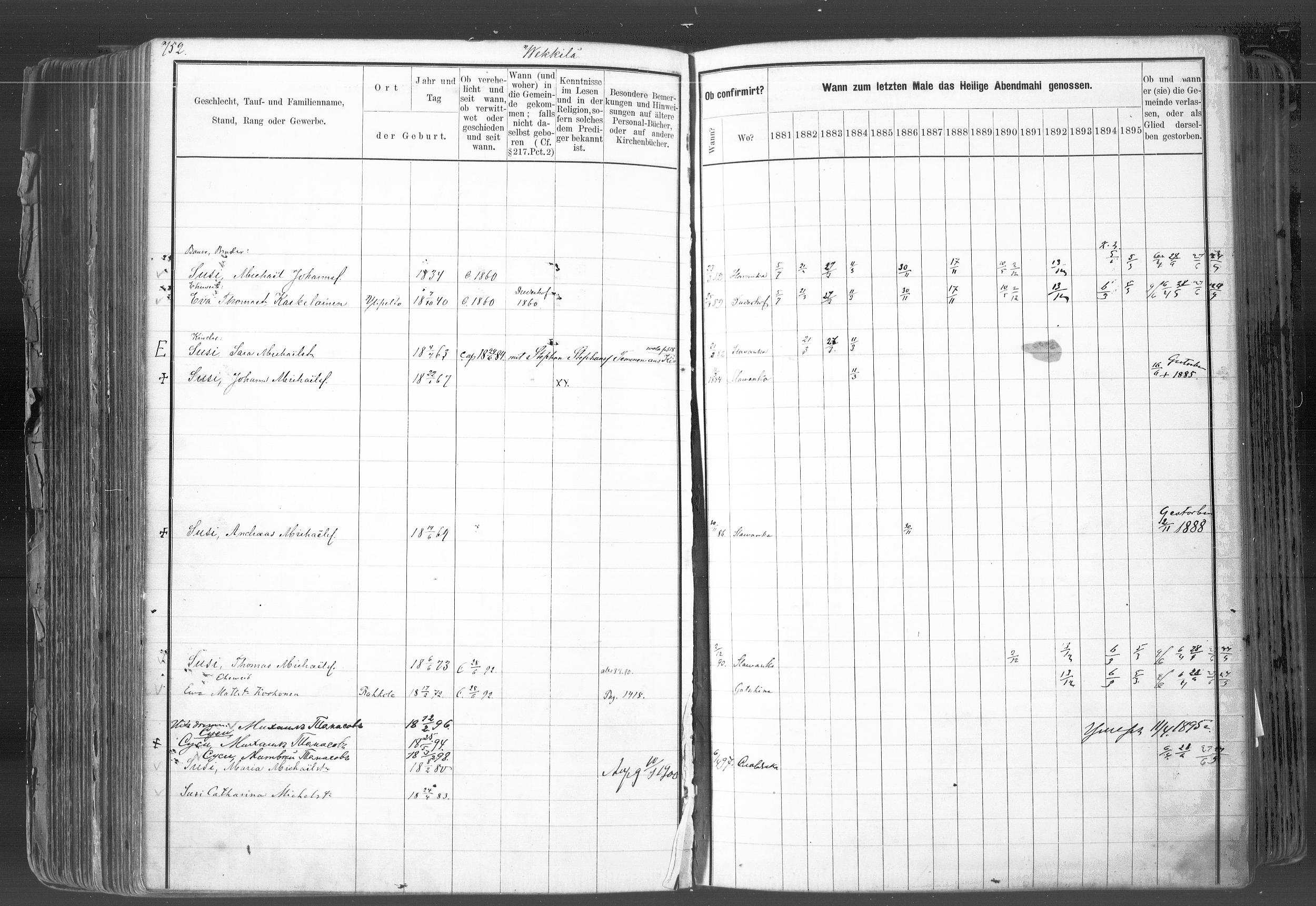 In rural areas, the church book records are organized by village, farm, and household. Within the cities these records were organized by quarter or street.
In rural areas, the church book records are organized by village, farm, and household. Within the cities these records were organized by quarter or street.
It is important for researchers to realize that Finland was part of Sweden until 1809. Church census records and pre-confirmation records were consequently written in Swedish until the mid-to-late 1800s. Don’t forget – FamilySearch wiki will give you a language cheat-sheet so you can get help with translating!
United Kingdom – London – Post Office Directories
London Post Office Directories 1842, 1851 and 1861, a browse only database at this time, is now available at Findmypast. You can browse over 1.5 million records from three London Post Office Directories. These directories include lists of traders, bankers, people employed by the crown, lawyers, and other officials. Though not indexed, they list names alphabetically by surname. You may be able to find your ancestor’s occupation, business address, or even their home address!
United Kingdom – Westminster
This collection from Westminster, Poor Law and Parish Administration includes over 1.7 million records. The parish administration was over several commissions and these records include bastardy papers, admissions, examinations, pauper records, valuations, and work house records.
Because there are so many different types of records in this collection, the amount of genealogically valued data will vary. Transcripts and digital images of the original documents are provided and can be searched by name, year, place, and record type.
Ireland – General Register Office Records
Irish Genealogy.ie has just released millions of personal records online for free! Births, marriages, and deaths are from the General Register Office. The expanded database includes the Birth Records Indexes from 1864 to 1914, the Marriage Records Indexes from 1845 (1864 for Roman Catholic Marriages) to 1939, and the Death Records Indexes from 1864 to 1964. To search these records, click here. You will find them under the Civil Records menu heading.
United States – New York City, Philadelphia, & Washington D.C. Newspapers
18th-century newspapers from three early capitals of the U.S. are new on the Chronicling America website. Browse through these digital newspapers for information about your ancestors. Nearly 15,000 pages have been added from The Gazette of the United States (New York, N.Y. and Philadelphia, Pa., 1789-1801), the National Gazette (Philadelphia, Pa., 1791-1793), and the National Intelligencer (Washington, D.C. 1800-1809). For even more information on how to boost your genealogy success using newspapers, check out Lisa’s book, “How to Find Your Family History in Newspapers,” in a digital e-book or traditional book form.
More Gems on Scandinavian Genealogy Records
Our Genealogy Google Guru Lisa Louise Cooke has a few more ideas for gaining access to more records and information about your Scandinavian ancestors. Here’s what Lisa says:
“You’ve probably already tried searching with Google to find more on your ancestors. But have you searched in Swedish, Finnish, or Norwegian? Start by going to Google Translate and entering your search query in English.
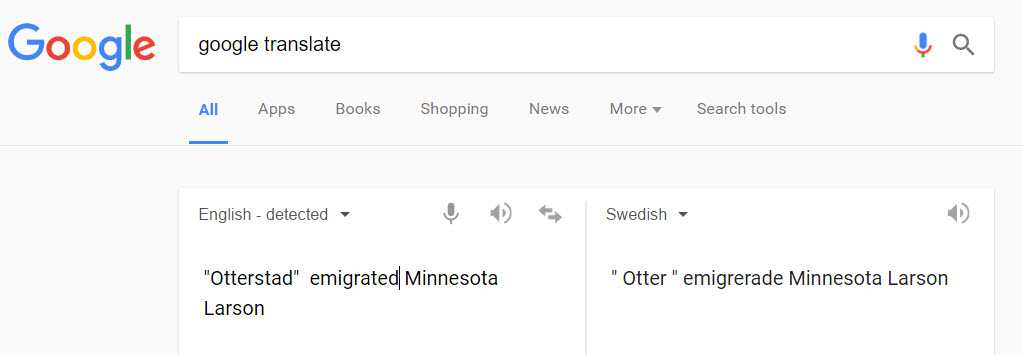
Google Translate will detect that you have typed in English. You’ll need to select the desired language from the drop-down menu in the box on the right. Above, I’ve selected Swedish. Google Translate has now translated my query. Highlight and copy the translated text.
Next, go to the Swedish version of Google, which you’ll find at https://www.google.se/. Paste the translation in the search box. I’ve changed “Otter” back to the actual name of the town “Otterstad,” because I didn’t need that to be translated! Here are my search results:
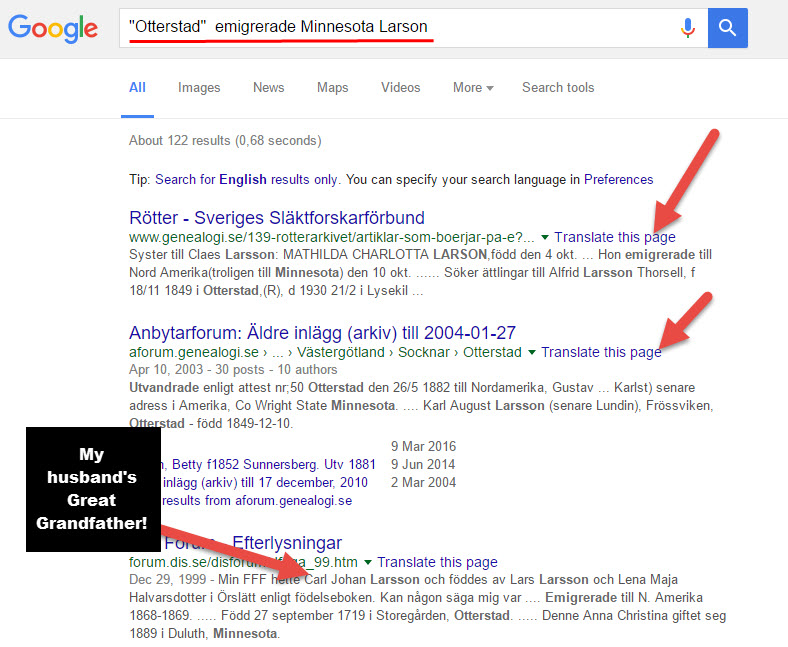
Notice, each webpage search result has a link you can click to “Translate this page.” Click it and you’ll go to that page, but it will appear in English!
I’m thrilled to see my husband’s great-great-grandfather’s name in this bottom result. I’m off to work on this family…have fun with Google Translate and the Scandinavian Googles!” – Lisa
Isn’t th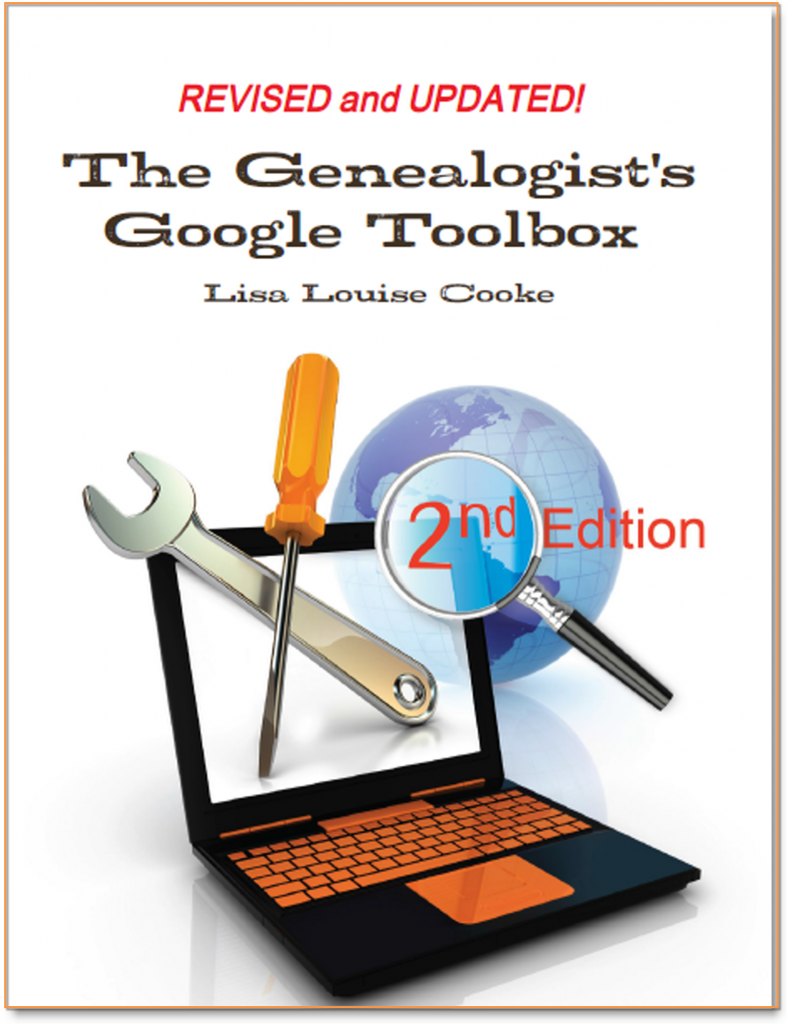 at an awesome search strategy?! This is exactly the kind of outside-the-box thinking Lisa is known for which she covers more in-depth in her book The Genealogist’s Google Toolbox Second Edition. In fact, there’s an entire chapter in the book about how to use Google Translate in exciting, innovative ways for genealogy.
at an awesome search strategy?! This is exactly the kind of outside-the-box thinking Lisa is known for which she covers more in-depth in her book The Genealogist’s Google Toolbox Second Edition. In fact, there’s an entire chapter in the book about how to use Google Translate in exciting, innovative ways for genealogy.
Here are the links Lisa sent me for the various Scandinavian Googles:
And finally, here’s more on Scandinavian research from our website:
by Lisa Cooke | Apr 8, 2015 | 01 What's New, Norwegian, Video
MyHeritage is a leading resource for Scandinavian genealogy research. Now they are offering a free webinar for those researching Danish, 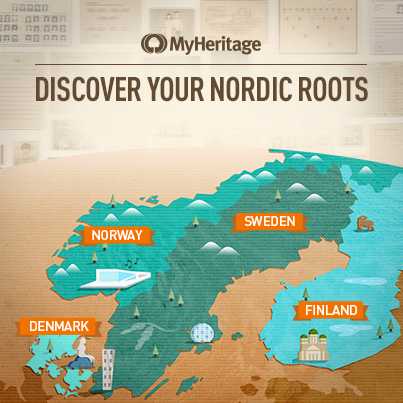 Finnish, Norwegian, Swedish and Icelandic ancestry.
Finnish, Norwegian, Swedish and Icelandic ancestry.
On Wednesday, April 15, Mike Mansfield, MyHeritage Director of Content and Jason Oler, MyHeritage Senior Program Manager, will host a program packed with research tips and strategies for navigating the millions of Scandinavian genealogy records now on MyHeritage. Click here to register.
Ready to learn about Scandinavian genealogy NOW? Genealogy Gems Premium members can access Premium Podcast Episode #15, in which Lisa interviews Scandinavian research expert Ruth Mannis at the Family History Library. Ruth simplifies and clarifies the process and reassures us that everyone can have success finding their Scandinavian roots. If you’re not a Premium member yet, you’re missing out on gems like Ruth Mannis’ interview–and more than 100 more premium podcasts like these and dozens of genealogy video tutorials. Get a year’s access
to all of this for one low price. Click here to learn more.
by Lisa Cooke | Dec 27, 2014 | 01 What's New, Census, Church, MyHeritage, Norwegian, Records & databases, Trees
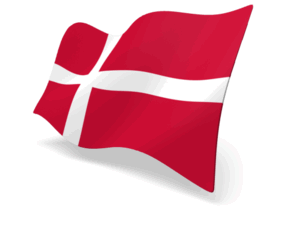 MyHeritage has announced a new arrangement with the Danish National Archive to digitize, index and make available online millions of Danish genealogy records. According to MyHeritage, these include:
MyHeritage has announced a new arrangement with the Danish National Archive to digitize, index and make available online millions of Danish genealogy records. According to MyHeritage, these include:
- “Danish national censuses, including approximately 9 million images and 31 million records, covering the years of 1787 through to 1930. One of the most enlightening sources of historical content, census records provide a glimpse into a family’s past listing information about each household including the names of occupants, information on residence, ages, places of birth and occupations.
- Church records (3.9 million images) containing approximately 90 million names from 1646 to 1915. The Parish Register provides information regarding anyone who was born, baptized or confirmed (after 1737), married or died in a particular parish. The records include rich information about a person’s family: for example, for baptisms they list the date of birth, date of baptism, name of the child, parent’s names, occupations and residence, and often names of witnesses and godparents.”
According to MyHeritage, “The records, spanning almost 300 years, provide a window to the lives of Danish ancestors during fascinating periods in history including the Napoleonic wars, liberalism and nationalism of the 1800s, the Schleswig Wars and industrialization.
“The records will illuminate the lives and times of noted Danish historical figures such as Kierkegaard and Niels Bohr. Celebrity fans will be able to look into the family history of Danish Americans such as Scarlett Johansson and Viggo Mortensen for clues on their success. Many of the records will be made available on MyHeritage as early as April 2015 and the rest will be added during the year.
MyHeritage is a leader in family history for those with Nordic roots and is “the only major company providing services in Danish, Norwegian, and Finnish. With more than 430,000 users in Denmark and an additional 600,000 registered users in Sweden, 500,000 in Norway, and 280,000 in Finland, MyHeritage has amassed the largest Nordic user base and family tree database in the market.”
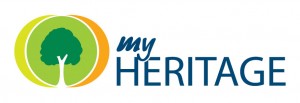 Just one more reason we at Genealogy Gems are pleased to have MyHeritage as a sponsor of the Genealogy Gems podcast. Click to learn more about why we’ve chosen to partner with them.
Just one more reason we at Genealogy Gems are pleased to have MyHeritage as a sponsor of the Genealogy Gems podcast. Click to learn more about why we’ve chosen to partner with them.
by Lisa Cooke | Apr 30, 2013 | 01 What's New, Immigration, Who Do You Think You Are?
T he Danish Broadcasting Corporation is filming its own version of “Who Do You Think You Are?”–which we’ve learned via two U.S. newspapers!
he Danish Broadcasting Corporation is filming its own version of “Who Do You Think You Are?”–which we’ve learned via two U.S. newspapers!
According to the Bureau County Republican and the NewsTribune (Illinois Valley), popular Danish actress Suzanne Bjerrehuus was in the area filming stories of her great-great-grandparents, who emigrated from Denmark to the American Midwest in 1869. (They apparently left behind one of their six children, from whom Bjerrehuus descends.)
As part of her whirlwind family history tour, Bjerrehuus reportedly visited the Danish Immigrant Museum in Elk Horn, Iowa. If you have Danish roots, you should probably check out their website. They have a Family History & Genealogy Center, which specializes in helping people find links to their Danish immigrant past. They provide research and translation services and they’ve helped people connect with long-lost relatives in both Denmark and the United States.




 In rural areas, the church book records are organized by village, farm, and household. Within the cities these records were organized by quarter or street.
In rural areas, the church book records are organized by village, farm, and household. Within the cities these records were organized by quarter or street.


 Finnish, Norwegian, Swedish and Icelandic ancestry.
Finnish, Norwegian, Swedish and Icelandic ancestry. 
 Just one more reason we at Genealogy Gems are pleased to have MyHeritage as a
Just one more reason we at Genealogy Gems are pleased to have MyHeritage as a 



